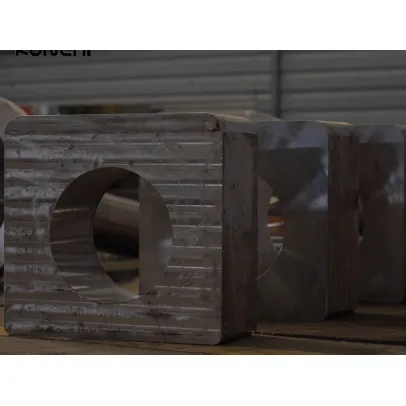What is block forging?
Block forging, also known as die forging or impression-die forging, is a metalworking process that shapes metal by applying compressive forces through the use of dies and tooling. This precise and versatile technique is employed to produce a wide range of components, from intricate and small parts to large industrial components. Let's delve into the intricacies of block forging to understand its principles, applications, and advantages.
1. Understanding Block Forging:
Process Overview: Block forging involves placing a metal workpiece between two dies and applying compressive forces to shape the material. The dies contain the desired shape, and as the metal is forced into the dies, it takes on the form of the cavities within them.
Material Compatibility: Commonly used metals in block forging include steel, aluminum, brass, and titanium. The process is highly versatile and adaptable to various metal alloys.
2. The Block Forging Process:
Preparation: The process begins with the selection of the raw material, usually in the form of a metal billet. The billet is heated to an optimal forging temperature to enhance plasticity.
Placing in Dies: The heated billet is then placed between the two dies, which are machined to the desired shape. These dies are brought together, subjecting the material to compressive forces.
Forging: The metal flows and takes the shape of the dies. This can be done through open-die forging, closed-die forging, or impression-die forging, depending on the complexity of the part.
Trimming and Finishing: After forging, excess material is trimmed off, and additional machining or finishing processes may be applied to achieve the final product.
3. Applications of Block Forging:
Automotive Industry: Block forging is widely used in the automotive sector to produce critical components like crankshafts, connecting rods, gears, and other parts that require high strength and precision.
Aerospace: The aerospace industry benefits from block forging for components such as landing gear parts, engine components, and structural elements where strength and reliability are paramount.
Oil and Gas: Critical components in the oil and gas industry, such as valves, flanges, and drill bits, often undergo block forging for enhanced strength and durability.
4. Advantages of Block Forging:
Strength and Durability: Block forging results in parts with improved mechanical properties, including higher strength and durability.
Precision and Consistency: The use of dies ensures precise shaping, allowing for consistency in the manufactured parts.
Material Savings: Compared to other manufacturing processes, block forging can be more material-efficient, minimizing waste.
Enhanced Grain Structure: The forging process refines the grain structure of the metal, contributing to increased strength.
5. Challenges and Considerations:
Tooling Costs: The initial costs associated with designing and manufacturing dies can be relatively high.
Heating Requirements: Achieving the optimal forging temperature requires energy, making heating costs a consideration.
Block forging stands as a cornerstone in the world of metalworking, offering a reliable and efficient method for shaping metals into high-strength, precision components. Its widespread use across industries attests to its versatility and the enduring appeal of this time-tested manufacturing process. Whether in the automotive, aerospace, or oil and gas sectors, block forging continues to shape the future of metal component manufacturing.



